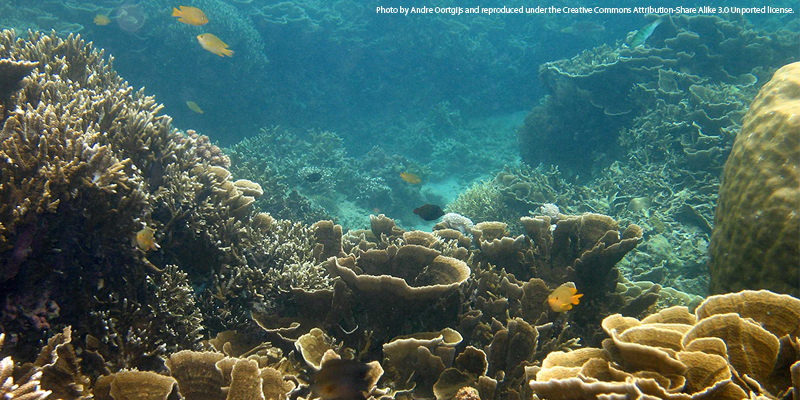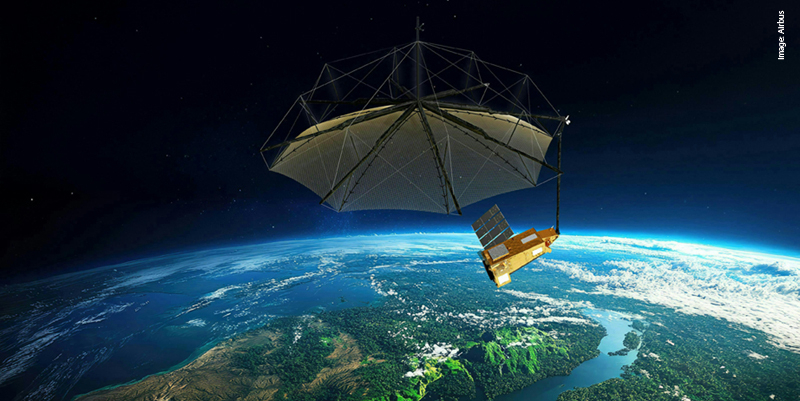An experiment, carried out from a stratospheric balloon floating 35 km above the Brazilian jungle, to validate one of the instruments operating on the meteorological satellite MetOp was also used to support preparations for the candidate Earth Explorer TRAQ mission.
Image: Location of balloon campaign relative to MetOp track.TRAQ (Tropospheric composition and Air Quality) is one of the six candidate Earth Explorer missions that has just completed assessment study. This mission concept, along with the other five, will be presented to the science community at a User Consultation Meeting in January 2009. Up to three missions will subsequently be chosen for the next step of the implementation cycle, which will be a feasibility study. This will lead to the selection of ESAâs seventh Earth Explorer mission â envisaged to launch in the 2016 timeframe. As the population of the Earth continues to grow and the planet becomes increasingly industrialised, the chemical composition of the atmosphere is undergoing rapid change. As well as having an effect on global climate, these changes also translate into pollution. Needless to say, this is having a negative impact not only on human health, but also on other animal and plant life.Within this context, there is a need to better understand the complex chemical and physical processes occurring in the lowermost part of the atmosphere â the troposphere. The need extends to understanding how concentrations of aerosols and trace gases, such as carbon monoxide, ozone, nitrogen dioxide and methane, affect the quality of the air we breathe. This would include estimates of the strength of their associated sources and sinks. In response to this need, the main objective of the candidate TRAQ mission is to observe key trace gases and aerosols in the troposphere and hence improve our understanding of air quality. The proposed concept would employ an instrument package including imaging spectrometers operating in ranges between ultraviolet and short-wave infrared, spectrometers in the thermal infrared, a multi-directional polarization imager and a cloud imager.As part of the preparation process for the TRAQ concept, a joint ESA and French Space Agency (CNES) validation experiment for MetOp was exploited to include objectives for the TRAQ mission. The balloon campaign, organised by the French Laboratoire de Physique Moléculaire pour l\'Atmosphère et l\'Astrophysique (LPMAA), was used for the validation of the Infrared Atmospheric Sounding Interferometer (IASI) instrument currently operational on MetOp, as well as for the scientific preparation of the TRAQ mission. IASI carries a long-wave spectrometer, which observes infrared thermal emissions from the surface of the Earth, similar to that proposed for TRAQ â while the TRAQ version would have a spectral resolution four times better. The huge stratospheric balloon was launched by CNES in coordination with the Brazilian National Institute for Space Research (INPE) just before nightfall from a site in northern Brazil near the town of Teresina. It carried an instrumentation package that included a long-wave spectrometer, a thermal infrared imager and a small near-infrared spectrometer. The balloon flight, which was carefully timed to coincide with an overpass of the MetOp satellite, reached an altitude of 35 km and thanks to the favourable weather conditions lasted almost eight hours. The success of the balloon campaign has resulted in matching scenes observed from space by the IASI instrument on MetOp and from the instruments carried on the balloon for validation. The data acquired from the balloon campaign clearly show the spectral signatures of carbon monoxide, either in radiance or brightness temperature. Through inversion techniques, the corresponding spectra have been used to derive the vertical distribution of carbon monoxide along with further atmospheric information âshowing what could be achieved with the long-wave spectrometer proposed for the TRAQ mission. As well as proving successful in terms of validating atmospheric data being received from IASI, the balloon campaign also helps to show how a better understanding of atmospheric composition and air quality could be achieved with improved satellite remote sensing instruments.
Author: ESA Press Service
For more information visit:
Subscribe to our newsletter
Stay updated on the latest technology, innovation product arrivals and exciting offers to your inbox.
Newsletter

